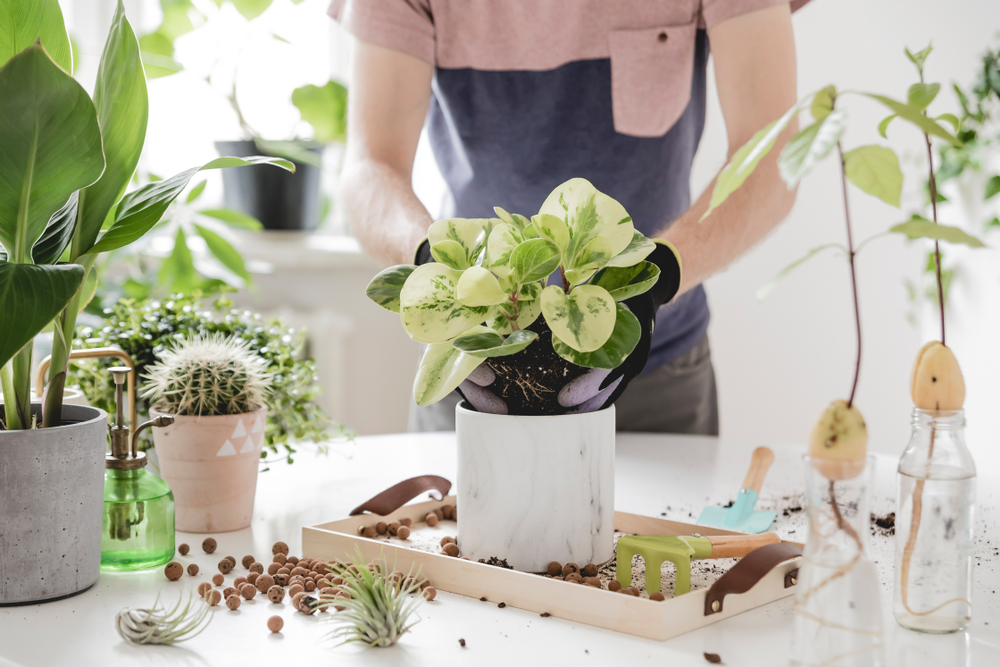How to take care of your indoor plants: essential tips for a green home
03-11-2022
Are you excited about having an indoor plant-filled house this year? We think that’s great! Keeping plants is a wonderful hobby. However, it does require some work and dedication since indoor gardening isn’t all that easy. To keep your plants healthy and green all year long, you need to know what to do and what not to do when it comes to keeping them happy. Fortunately, we have the tips you need to grow a successful indoor garden this year. Read on and learn how to take care of your plants to thrive in your home.
Determining the light requirements for your plants
One of the biggest things you need to know when keeping indoor plants is their light requirements. Some indoor plants prefer much light, while others need less. To keep your plants healthy, you need to know how much light they need. You can usually find this information on the plant’s tag. If it’s not on the label, you can search for the plant’s light requirement online. Regarding light, there are two factors to consider: Intensity and duration. Intensity refers to how bright the light is. This means you must consider how long the plant will be lit and at which brightness. Generally speaking, windows to the north let little light pass, while windows to the south let in the most light.

Rotate your indoor garden regularly
Another important thing you need to know when keeping indoor plants is to rotate them regularly. When you turn your indoor plants, it helps to improve their health and keep pests away. When should you rotate your indoor garden? Ideally, you should rotate your indoor garden once every three months. When you rotate your indoor plants, you turn them around about 180 degrees. Plants grow towards the light, so if you rotate it, your plant will grow out evenly on all sides, making it look nicer and better cared for.
Use the suitable soil for your plants
The soil you use can significantly affect your indoor plants’ health. Indoor plants like begonia, fiddle leaf fig, philodendron, and a variety of others need soil enriched with organic matter. You can find soil at the garden supply store. You can also try to make your own enriched soil. When making soil, you’ll need to include things like compost, peat moss, and vermiculite. You should also ensure enough space for water to flow through the soil easily. Never add too much fertiliser to the soil. When fertilising the soil, use a specially formulated fertiliser for indoor plants.
Don’t over water, but don’t let them dry out completely either
You also need to be careful not to overwater your indoor plants. Overwatering can cause fungus to grow in your indoor plants’ soil. You should water your plants regularly and ensure the water drains through the soil. You also shouldn’t let the water sit in the soil for too long, which is why watering is best done in the morning or during the day. Indoor plants also need to be watered less in the winter since the days are shorter. In the winter, you should water your indoor plants once every two weeks.
Learn how to prune properly
When you’re keeping indoor plants, you should prune them regularly. Pruning helps indoor plants grow strong and healthy. Many indoor plants need to be pruned periodically. You can find out if your plant needs pruning by checking the internet or reading the plant tag. You can prune your indoor plants in different ways. There are a few reasons why you might want to prune your indoor plants. Pruning can help you control the shape and size of your plants. It can also help to redirect energy from the bottom of the plant to the top. Pruning can help your indoor plants grow stronger.
Repotting is essential
Another important thing you need to do to keep your plants healthy is repotting them. You should repot your indoor plants every year. When you repot your indoor plants, you remove the old soil from the pot and replace it with new soil. You should repot your indoor plants when the roots start growing out of the drainage holes in the pot. You can use various pots when repotting your indoor plants, like plastic, ceramic, or clay pots. You can also use pots that are made from recycled materials. When repotting your indoor plants, you should make sure the pot is the right size. The pot should be at least 20% bigger than the current one. Make sure the new soil is of good quality. The soil should be light, porous, and free of pests.
Conclusion
Keeping indoor plants is a wonderful hobby that can be very therapeutic. Indoor gardening is a great way to add some green to your indoor spaces. When you keep indoor plants, you need to know how to take care of them so they can thrive. Keep these tips in mind when keeping indoor plants, and you’ll have a successful garden all year long!
